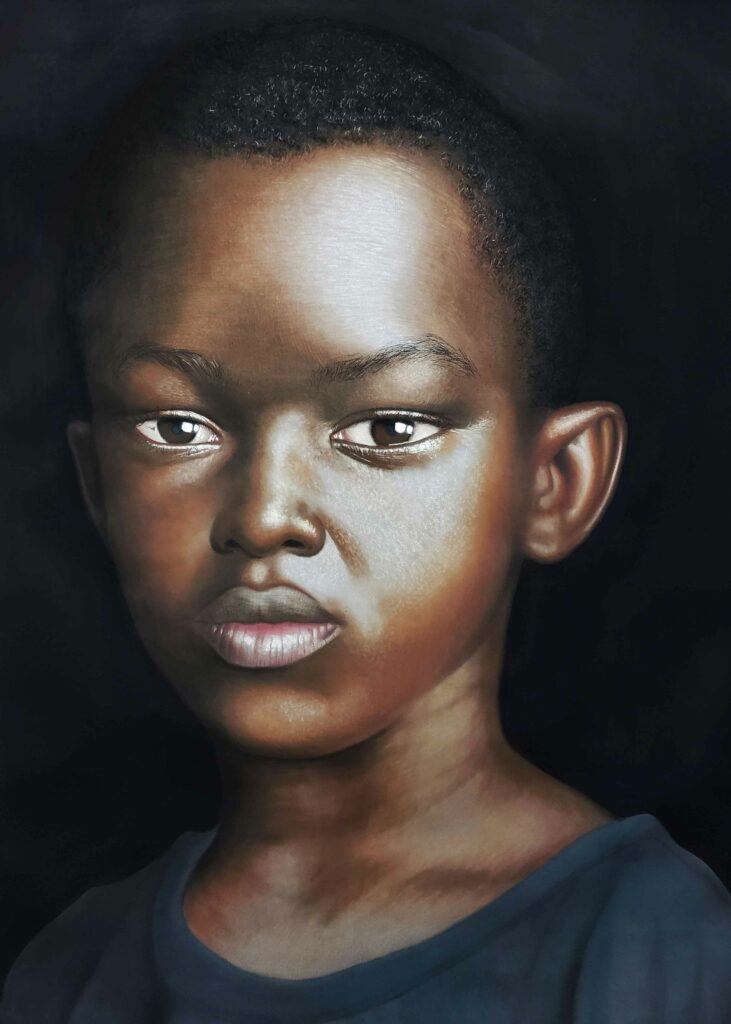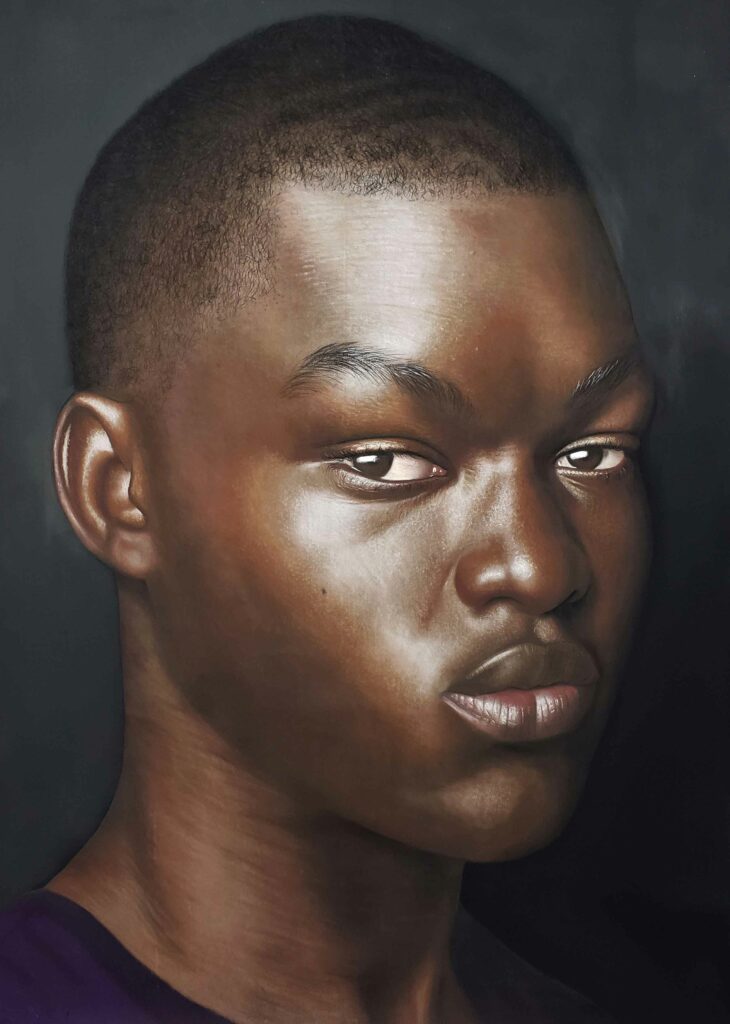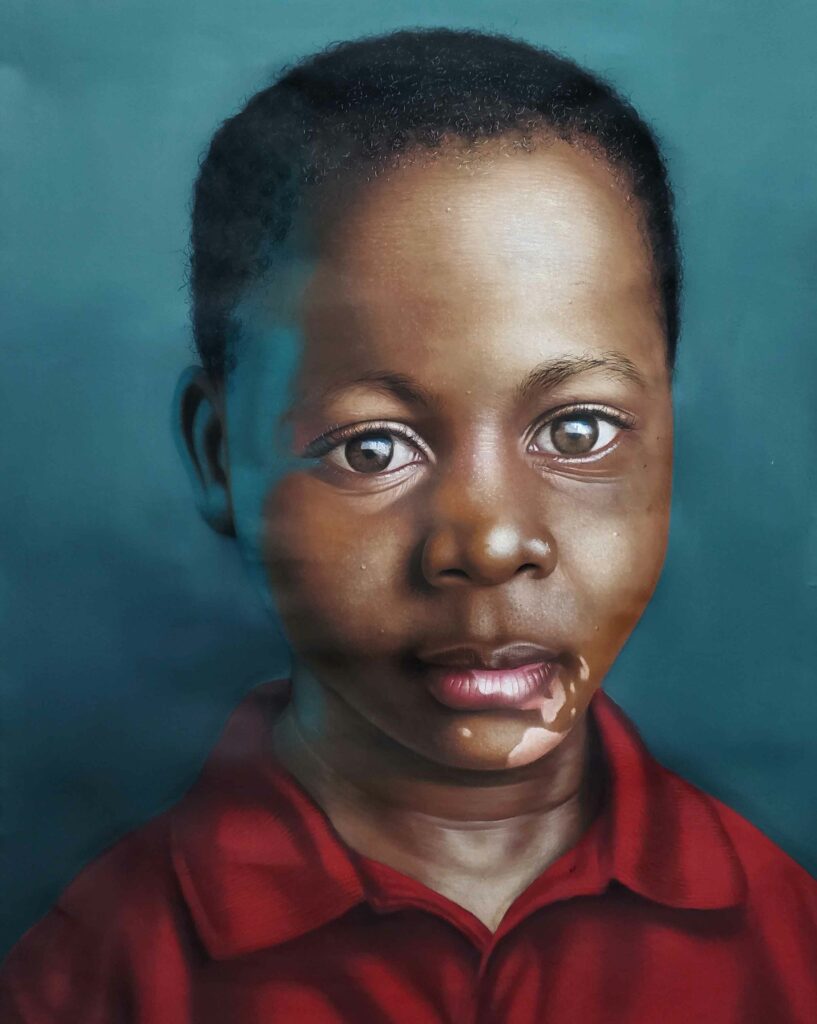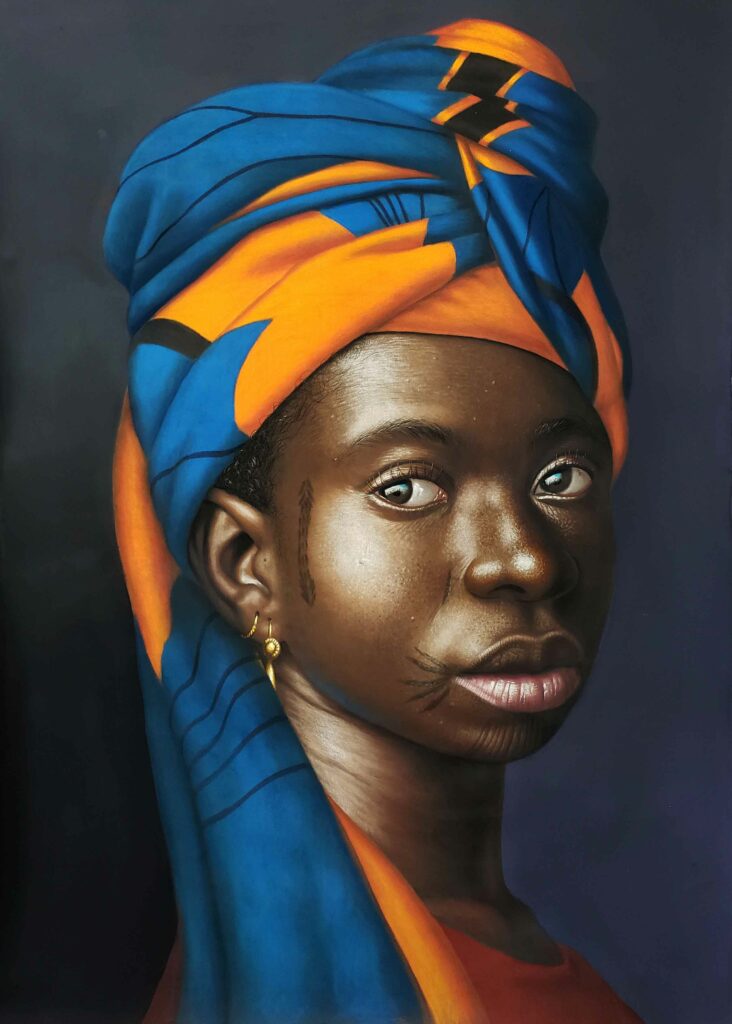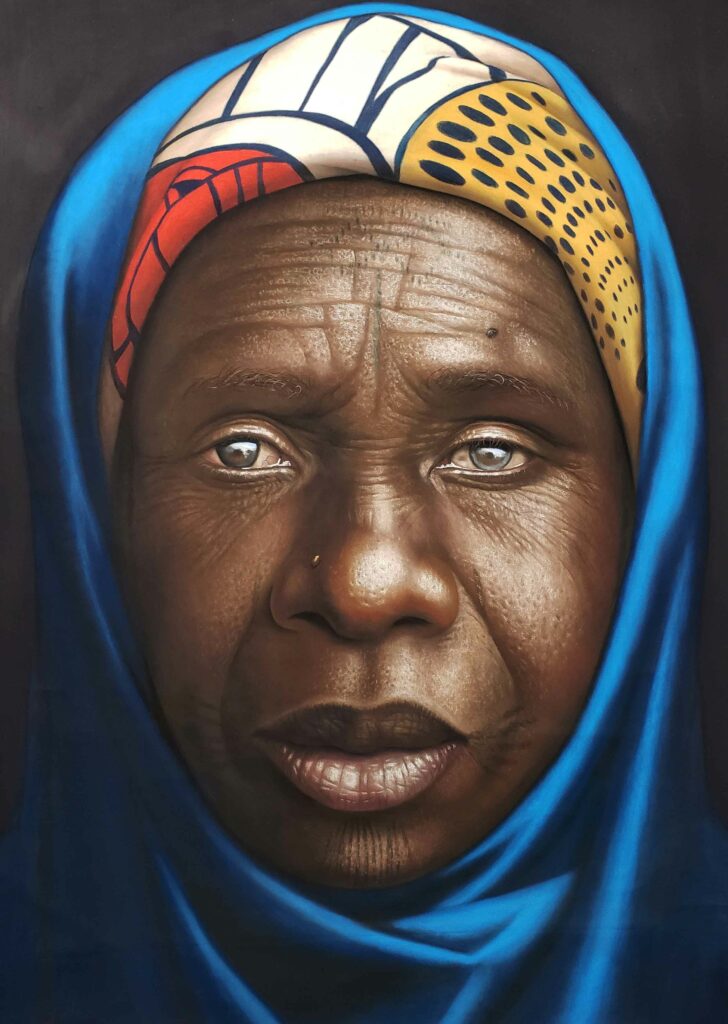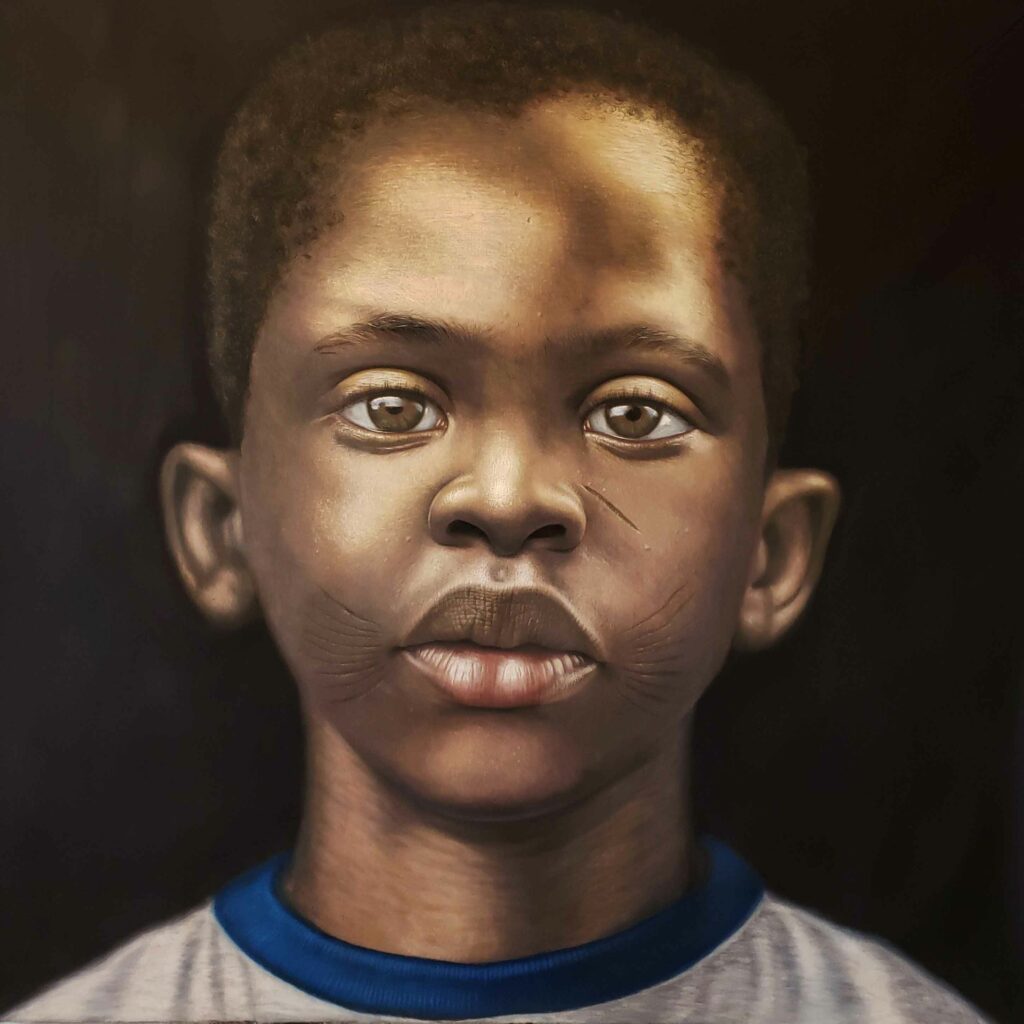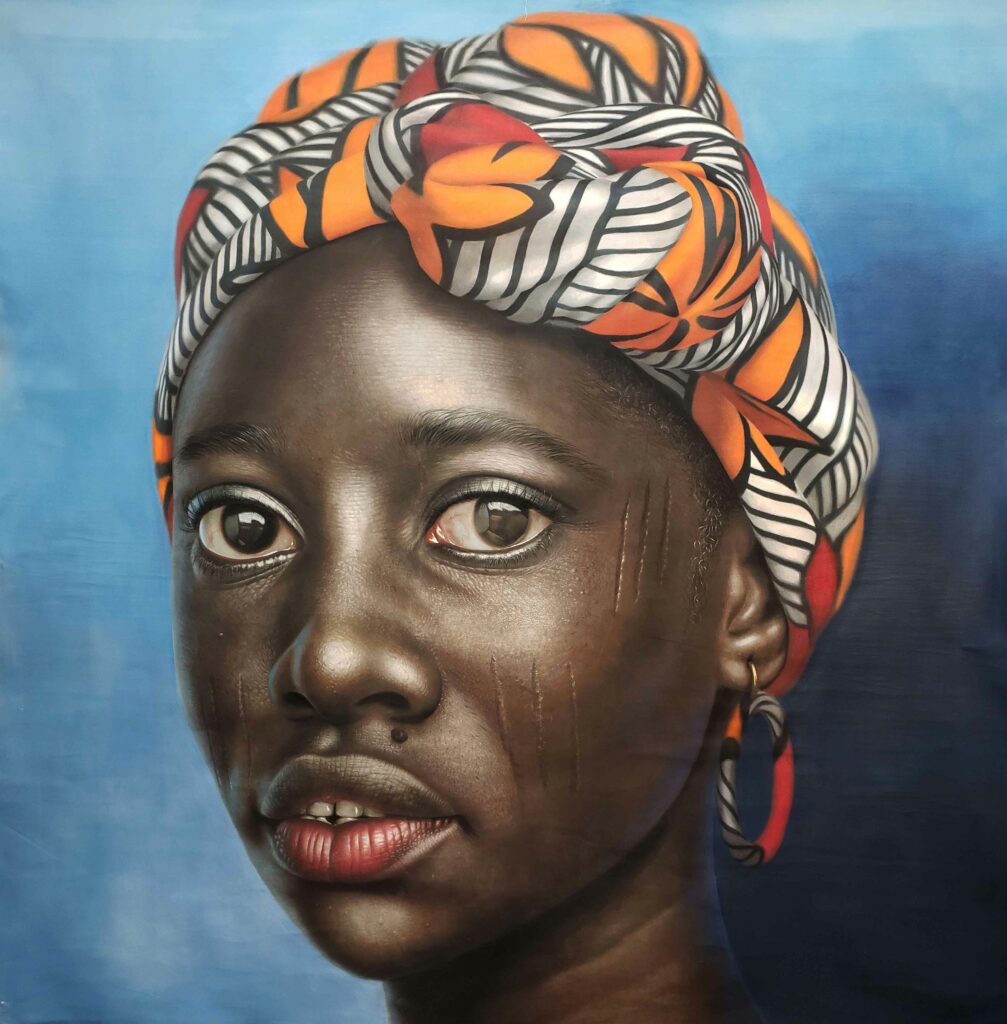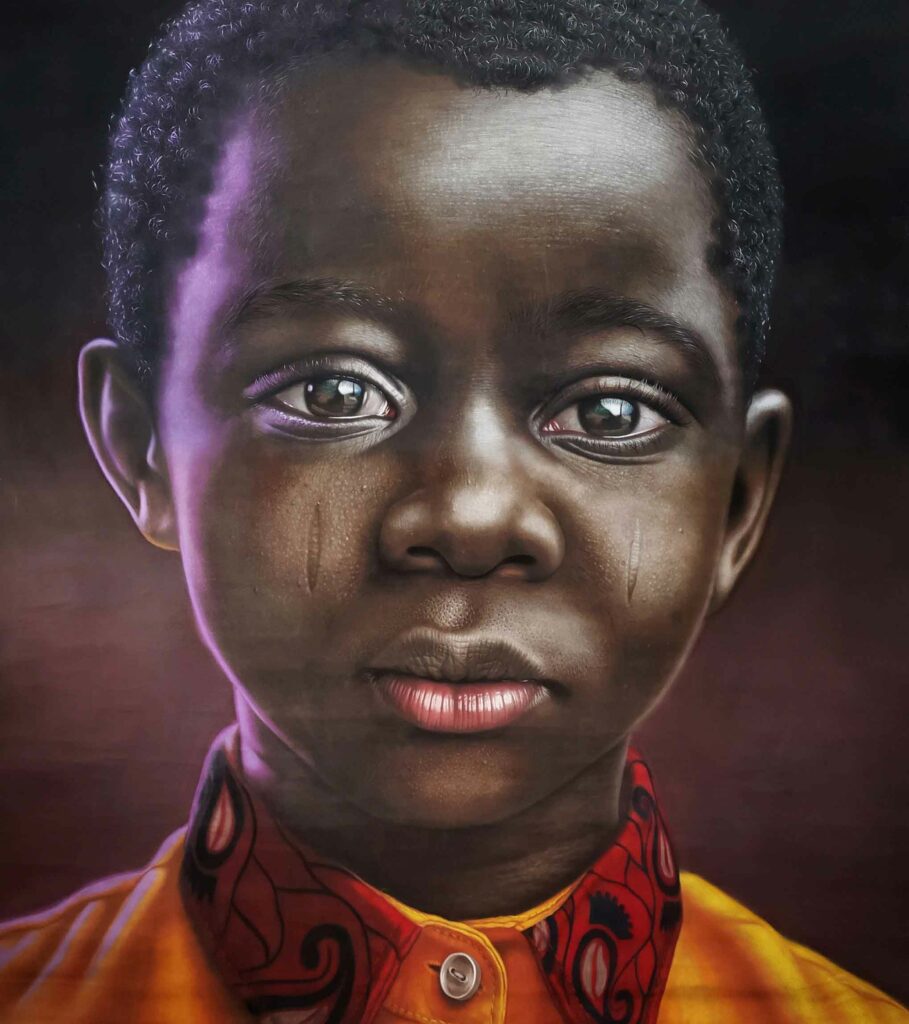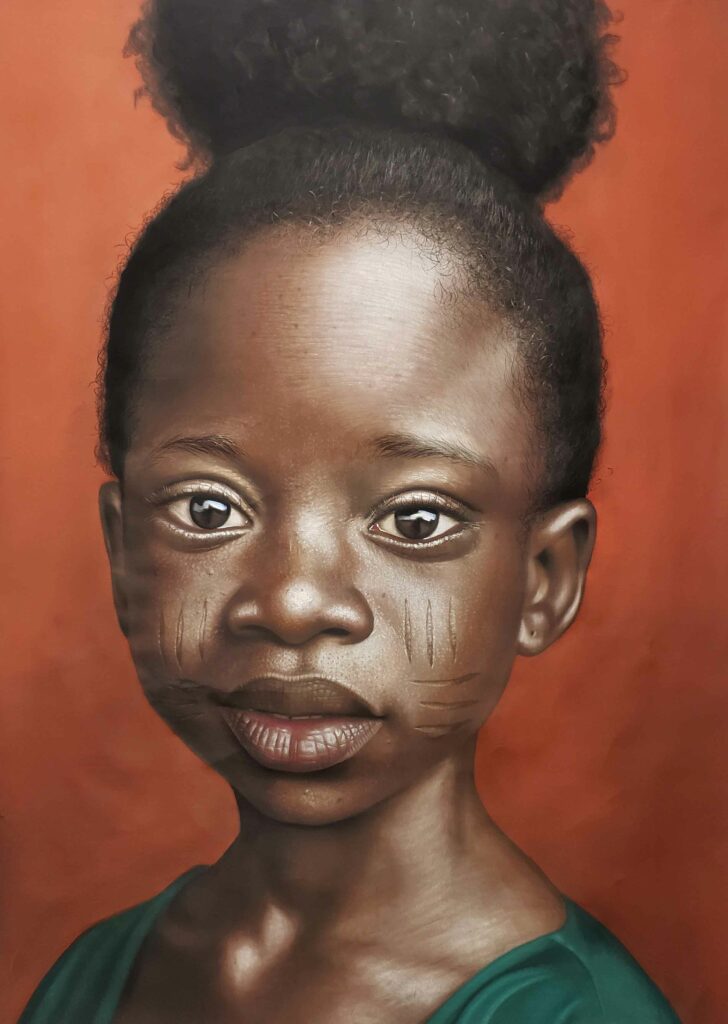30 March - 19 May, 2024
Atunwa: Portraying the Different Biographies of An Artist:A Solo Exhibition by Babajide Olatunji
Shanghai
Overview
Shanghai—Pearl Lam Galleries is delighted to announce the upcoming exhibition, ATUNWA: Portraying the Different Biographies of an Artist, a solo show by Nigerian-born, London-based artist Babajide Olatunji. This exhibition marks Olatunji’s first solo exhibition with the gallery and will showcase a series of captivating portraitures that explore our collective human experience through the lens of African diaspora.
Inspired by James Joyce’s A Portrait of the Artist as a Young Man, the exhibition title “ATUNWA” references the Yoruba linguistic tradition prevalent in West Africa and expresses the phenomenon of reincarnation derived from the doctrines of Ifa, the deity of wisdom and intellectual development, signifying transcendence across different times and spaces.
Olatunji’s artistic practice is deeply rooted in engaging with Nigerian history and culture. Rejecting the notion of historical revision and identity politics, the artist deliberately turns away from addressing the injustices resulting from colonisation. Instead, he seeks to repurpose art history, asserting that there is no need to reclaim anything from the colonial past. His aim is to tell Nigeria’s own history, acknowledge its rich lineage, and pay tribute to ancestry as something common to humanity.
By staging seven chapters of imaginary biographies with painting, Olatunji presents a collective rebirth of characters from the African diaspora, each embodying different social and moral roles. These fictional subjectivities collectively serve as social commentary, shedding light on psychological states resulting from loss, self-identity, perseverance, kinship, womanhood, domesticity, containment, social mobility, and intellectuality. Each individual chapter presented in the exhibition represents a unique individual closely associated with the artist and is a conscious reflection of fate and different paths. Through the depiction of aging in the three paintings dedicated to each character, the exhibition serves as a collective memento mori, reminding viewers of the transient nature of life and the universal destiny we all share. Furthermore, the facial scarification in some characters functions as a source code representing their cultural origin. The intricate patterns etched on the faces celebrate the intimacy and highlight the individuality of the depicted, inviting viewers to ponder the degree of idealisation. The gleaming gaze in individual portraits evoke a sense of hope and ambition, suggesting that all is right with the world. However, a subtle tinge of wariness and fear about an uncertain future and mounting familial responsibilities can be seen in the subjects’ eyes, while the slightly pinched mouths add a touch of solemnity to the overall expression.
Olatunji states, “I contend with this same question: Who are these people that I paint? If I could sit and chat with each of them, what stories would they tell? Perhaps each work is a little part of myself shed onto the world. Perhaps they are possible incarnates in other lifetimes and I am able to create them because they are recognisable to my identity. They are familiar, but I don’t always know who they actually are. They all possess their own superegos imbued on them by their families, religious affiliations and the society into which they are born and nurtured.”
Through the use of hyperrealism, Olatunji creates an immersive experience, drawing viewers into the narratives depicted in his portraits. Influenced by old European masters including Caravaggio, Rembrandt van Rijn, Diego Velázquez, and Théodore Géricault, the artist employs chiaroscuro painting techniques to capture the essence of his subjects. The use of light and mood further enhances the emotional impact of his works, while postulating the viewer’s reception and engagement. Olatunji’s paintings involve keen observation of his subjects, meticulous line drawings, and thoughtful adjustments to facial features, idealisation, complexion, background, and expression.
Atunwa raises intriguing questions about the existence of Olatunji’s subjects in different social strata, imagining the unique journeys and struggles they would encounter. These fictional characters include Amiya Dorcas Shekwokusumi, a proud Gbagyi woman who discovered her passion for storytelling from her grandmother’s captivating tales of Gwari culture. lyábò Olábámké Adébowálé, a singer/songwriter from Iseyin, Oyo state, found solace and passion in the vibrant world of Nigerian highlife music and finally earned recognition for her musical prowess when her second album released in 2005. Ajadi Esther Omodolapo, a potter and dyer, grew up among local weavers and mastered the ancient art of batik making. Daniel Domkat Lar, a wood carver and sculptor from a lineage of artisans, meticulously crafts intricate designs on blocks of mahogany. Òkè Samson Babalola, a performance artist and traditional drummer, merges social satire with mythological narratives. Dantala Dennis Ibrahim, a scholar and painter, explores forgotten histories and portrays vibrant landscapes of the African Savanna. Babájídé Olatunji, the artist himself, inspired by his elder brother, uses his artistic talents to navigate and contribute to the world around him.
This exhibition not only conveys the artist’s technical prowess and storytelling ability but also serves as a catalyst for introspection and empathy. It prompts viewers to consider the multiplicity of human experiences and the interconnectedness of our shared humanity, encouraging a deeper understanding of the diverse paths we all walk in this complex and increasingly segregated world.


